|
|
Achieving 30 Pigs/sow/yearSummarized by Emma Clowes, Alberta Agriculture, Food and Rural Development - A breakout session at this year's Banff Pork Seminar was dedicated to the achievement of 30 pigs per sow per year, this article summarizes this session.
Richard Johnson from Big Sky Farms, Saskatchewan, who manages 42,000 sows and Henrik Jensen from the Christiansminde Multisite, a Danish 1,150 sow unit, described some tools and technologies they have used to achieve/maintain this goal.
What two systems are doing to achieve 30 pigs/sow/year Big Sky Farms started a "30 Pigs Group" in late 2001 to improve replacement gilt performance and to target 30 pigs weaned per mated female per year. The group has conducted on-farm trials and held training workshops to improve farrowing performance by focusing on a) farrowing more live pigs and b) increasing piglet survival.
Big Sky Farms has implemented an enhanced genetic improvement system in their 650 sow nucleus herd using individual estimated breeding values (EBV) based on a best linear unbiased prediction (BLUP) system. Currently, Big Sky's BLUP selection program is based on the number of pigs born and born alive, the percentage of pigs weaned and age at first mating, with strong emphasis on the number of pigs born. Big Sky Farms also implemented a prolific program in their multiplication herd in the fall of 2003.
- Internal training workshops - are mandatory for relevant managers and production staff in the Big Sky system and have dealt with issues including:
- Reducing pre-weaning mortality
- Reducing stillbirths
- Improving lactation feed intake
- Optimize fertility rates
- Improvement in replacement gilt selection - Big Sky Farms use sow/gilt EBV:
- for replacement gilt selection in the nucleus and multiplication units
- as a criteria for culling sows out of the herdfor matching matings between sows and the genetic company boars
- Big Sky's prolific program preferentially selects gilts from litters of 13+ total born. To date, an increase in 0.15 total born an increase in farrowing rate from 91 to 92.5 per cent has been achieved. Hi-prolific semen, used in 50 per cent of sows at the multiplication level, has increased total born from 10.9 to 11.8 and farrowing rate from 81 to 88 per cent.
- Emphasis has also been placed on selection of replacement gilts with a minimum weight of 115 kg upon entry into commercial units, and a target entry to service interval of about 32 days. Twenty-five percent of the staff's monthly bonus in the multiplication unit is aligned to the quality of gilts entering the commercial units.
- On-farm trials - are conducted to assess the effectiveness of various tools and technologies such as delayed mating, PG600 use in replacement gilts on herd entry and boar stimulation.
The Danish system wean 30+ pigs per sow per year and believe that several key components contribute to this achievement. These components include:
- Use of hyperprolific dam lines.
- First breed gilts at an older age (270+ days) and a heavier weight (160+ kg). Caution should be used if adopting this practice in North America:
- Wider stalls (26 inches), than conventionally used in North America, may enable better retention of larger animals in the Danish system, as sows may not outgrow the system as quickly.
- Delaying first breeding gilts until 9 months leads to many more non-productive days per sow, and likely, more replacement gilts will be required because a smaller proportion of gilts may be bred successfully.
- Close attention paid to the sow at farrowing to minimize stillbirths, and assist where necessary. Induction is not practiced in this system.
- Split-suckle to ensure all piglets receive sufficient colostrum.
- Extend gilt lactation length to 30 to 35 days by weaning their litter at ~20 days and fostering on a litter of 5 to 7 day old pigs.
- Feed sows a high-density diet (6% added fat and 0.85% digestible lysine) three times daily to optimize feed intake. Adjust feeding levels twice daily to follow sow's appetite.
- Good management and production teams that are committed to the system's goals.
ConclusionAlthough a few systems are achieving 30 weaned pigs per sow per year, on average, industry is still a long way from this goal. Some common tools and technologies used by the two production systems that might help achieve this include:
- farrowing more live pigs - use of the correct genetics, close sow supervision during farrowing, attention to sow feed intake in lactation and continually reviewing standard operating procedures in the breeding area.
- increasing piglet survival - foster, split suckle and ensure all pigs receive colostrum.
Should industry follow the path of 30+ pigs per sow per year? Probably yes because of the increase in opportunity pigs in the system. However, industry needs to know whether grow-out performance, carcass quality and close-out variability is affected by the drive for larger litters.
Source: Alberta Government - June 2006 |
|



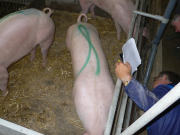
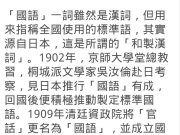
![越南非洲豬瘟疫苗蒙陰影 上百豬隻接種後死亡[轉貼]](data/attachment/block/3e/3e723490e252eebc3bc1a403febd226e.jpg)
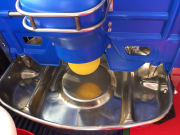
![[轉貼]從上市9頭到14頭 -- 我的養豬專業養成之路。](data/attachment/block/3c/3c17fd6b5c1b8cff34fdc7342238e082.jpg)

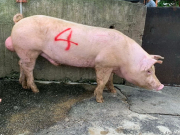
![[轉貼]這個倒霉王國,因為一隻老鼠慘遭滅國 .....](data/attachment/block/3f/3ffb7b6b8ec14613dc077bdd7603e3a5.jpg)
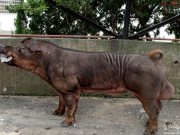



 IP卡
IP卡 狗仔卡
狗仔卡 [信息未更新]
[信息未更新] 發表於 2008-3-17 09:30:45
發表於 2008-3-17 09:30:45
 提升卡
提升卡 置頂卡
置頂卡 沉默卡
沉默卡 喧囂卡
喧囂卡 變色卡
變色卡 搶沙發
搶沙發 千斤頂
千斤頂 顯身卡
顯身卡 樓主
樓主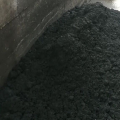

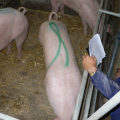

![越南非洲豬瘟疫苗蒙陰影 上百豬隻接種後死亡[轉貼]](data/attachment/block/d2/d2539d8909b33105a4f3e3b9b2e8a659.jpg)
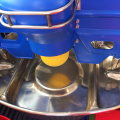
![[轉貼]從上市9頭到14頭 -- 我的養豬專業養成之路。](data/attachment/block/81/819f9b837f86a7e00498f8d95b8b9176.jpg)
